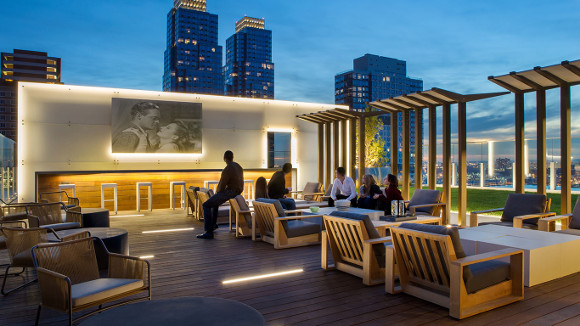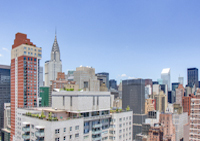
Five years ago Extell’s Aldyn building came to be, the building was purposed as a mixed condominium and rental building. Amenities in the Aldyn development would go on to change the way that rental developers use the space they're creating for amenities and what those amenities are. Along, with the Aldyn building, during the market crash many of the developed condominium buildings were converted into rental properties. The amenities, in the conversion buildings made the expectations of renters in Manhattan increase through the roof.
"[These converted projects] were built with larger apartments and more programmed-amenity spaces," said Jodi Ann Stasse, managing director of new developments at Citi Habitats to Crain’s Business. "And they started to set the tone for rentals after we found out how popular they became."
Developers are now tasked with the building a marketing structure and producing properties that will equate to the lofty expectations set in the past five years. Joseph Moinian who is creating the 60-story apartment building located at 605 W. 42nd Street, will have croissants, coffee, freshly squeezed juice, in the common room of his building every weekday from 6:00 am - 10:00 am. This is the new trend in the race of amenities that new developments are having to construe in order to properly compete with a market that is expanding quickly.
According to Citi Habitats this year along there will be 3,500 more rentals put on the market. In the year 2015 this number is expected to increase to 8,000 rentals on the market. With the exorbitant amount of apartments hitting the markets, developers have to make their buildings stand out above the rest. However, creating large spaces that could be used to make more apartments that would be beneficial for income, have to be carefully thought out.
Related’s Abington House on W. 30th Street used the ground floor as amenity space. This space that would normally be used as retail space that would have brought in it’s own income for the developers was instead used to bolster the residential apartments unit sense of community with amenities as soon as you enter the building the developers considered this to be a fair tradeoff, in which to keep up with the expectations of residents.
Gotham Organization’s Gotham West located just 20-blocks away from the Abington House, is a 1,238-unit rental development. The building instead of having traditional retail space instead has the Gotham West Market, which is a series of trendy restaurants on an open-floor within the building that is also open for public use. Gotham West also offers a complimentary valet bike service and tune-up services for their residents.
"[Developers] are constantly thinking of how to reinvent the amenity package to make it different and more appealing," said David Picket, president of the Gotham Organization.
Along with paying the cost for better communal amenities in the apartments, another major cost is marketing. Developing flashy online websites and paying high prices to have ad’s outshine the competition and show up first in search engines is the price that needs to be paid in order to outshine the competitors ad campaigns.
"Owners are shooting for high rents and always looking to be bigger, badder and better than the last building that came out," said Gary Malin, president of Citi Habitats. "[These developers] pay a heavy price to bring buildings to market on the rental side in terms of land acquisition, construction and then marketing costs."
All in all, it’s a necessity for developers in today’s Manhattan rental market. With land prices up 48% in the last four years, developers will have to add amenities that aren’t available in the adjacent neighborhoods, and compete to sell the best Manhattan lifestyle rentals, regardless of cost.





